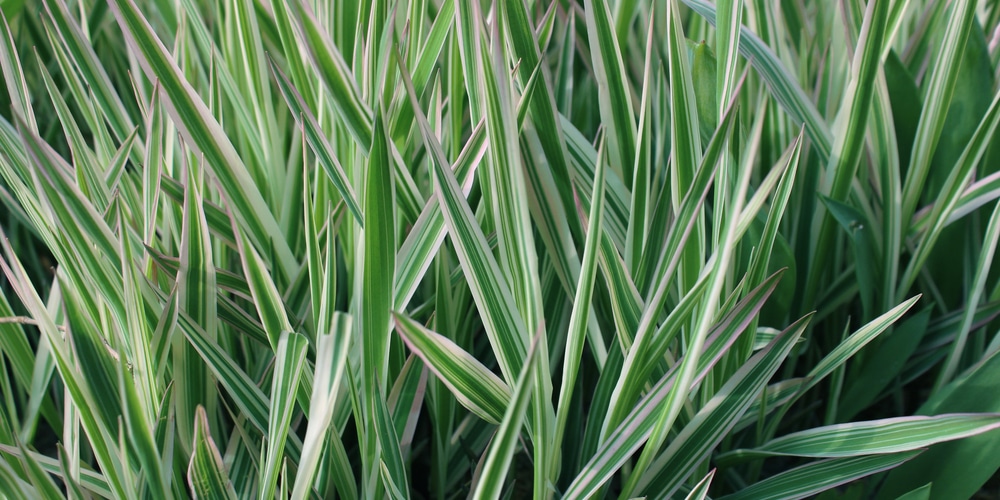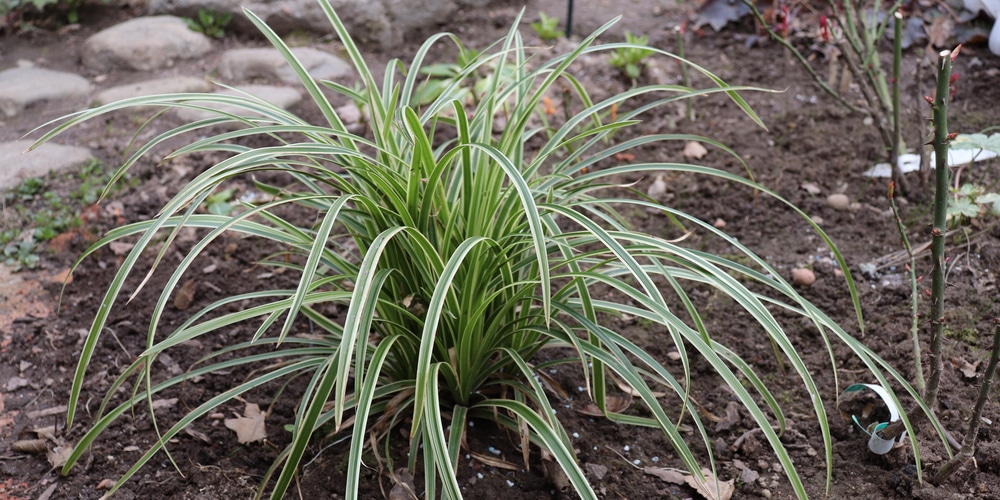Variegated ribbon grass is a plant that is easy to look past when choosing specimens for the landscape, but this hardy ornamental grass has many desirable qualities. It’s an excellent choice for growing in containers or small-scale garden areas where it can be appreciated up close. Variegated ribbon grass grows well in the sun or part shade, although it looks its best in locations that provide bright filtered light.
This plant makes an excellent accent in the landscape and grows well in small spaces. It’s also an ideal specimen plant for gardeners who want to add a tropical look to their landscaping without the fuss of keeping large specimens healthy. Let’s look at how to grow and care for Variegated ribbon grass.
What is Variegated Ribbon Grass?
Variegated ribbon grass is a perennial grass that forms tufts of narrow, dark green leaves with light-green strips. It produces creamy-white to pink plumes that rise above the foliage and can reach between 1 and 3 feet tall in the summer. This plant adapts well to acidic or neutral soils and cannot tolerate alkaline conditions. It thrives in USDA zones 4-9.
Variated ribbon grass is a hardy ornamental grass that can cope with cold weather and is drought-resistant. Its botanical name is Phalaris arundinacea var Picta.
Variated ribbon grass is used for ground cover and erosion control, especially on the slope of river banks. It’s also used in landscaping, flower beds, and the flowers can be cut and arranged in bouquets.
Variegated Ribbon Grass Care
Variegated ribbon grass requires only minimal care to stay healthy and attractive in the landscape. It dislikes being moved, so plant it in its permanent location right away. Here are some tips to help your variegated ribbon grass thrive:
Sunlight needs
This plant needs full sun exposure but also looks good when grown in part shade. It’s a reasonably versatile plant when it comes to sunlight and grows well in almost all light conditions, as long as it’s not totally in the dark. The plant prefers some shade in hotter regions.
Watering requirements
Water during the early spring through the fall when rain is not adequate. The soil should be kept moist without becoming soggy or waterlogged. Cut back on watering in winter, but don’t let this plant dry out completely, or its plumes will be sparse.
Fertilization
Do not fertilize variegated ribbon grass because it will produce seed at the expense of foliage.
Disease
This grass is susceptible to powdery mildew and rust during the cooler months if the air is damp. Treat fungal infections with fungicide spray and cut off infected stems. Varigated ribbon grass is pretty pest resistant, although some insects may feed on the leaves. The plant is also deer resistant.
Temperature
Variegated ribbon grass usually goes dormant during the fall and winter when temperatures drop below 60 degrees F. This grass also tends to look scraggly when it’s not in bloom.
Propagation
Variegated ribbon grass can be propagated from either divisions or seeds, although the latter is a long-term process that may take several years before flowers appear. It’s also worth noting that variegated ribbon grass is relatively invasive and can spread; if you want to avoid this, cut off and dispose of the seed heads, rather than letting them spread.
Soil
Use a high-quality potting soil or blend your own by mixing one part homemade or commercial potting mix with one part sphagnum moss and one part perlite. Varigated ribbon grass likes soil with a pH between 6.1 and 7.5, slightly acidic to neutral, is best.
Plant new specimens about 1 foot apart in moist but well-drained soil. Set the crown at ground level, surround it with 1 or 2 inches of mulch, and water thoroughly.
Pruning
Keep plants at the desired height by cutting them back in late fall or early spring. Cut plants back to new growth after flowering since many of the leaves are yellow and drop at that time anyway. This will promote dense new growth.
Conclusion
Variegated Ribbon Grass is a perennial that grows well in USDA plant hardiness zones 4 to 9. It can be found growing naturally in marshy areas, along coastal shores, and on moist banks throughout North America. Variegated Ribbon Grass prefers full sun to part shade and moist but well-drained soils.

